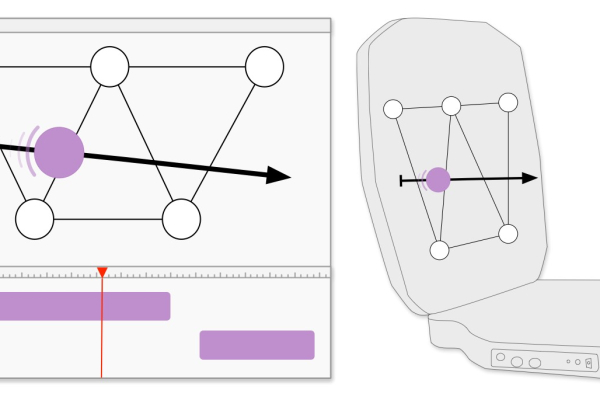
Oliver Schneider and Karon MacLean Partner with Disney Research to Develop Haptic Animation Tools
New technology developed at Disney Research can create touch-based (“haptic”) sensations that move across your skin, creating literal shivers down your spine. These types of effects improve user experience with games, rides, and other media, both for entertainment and for assistive or educational applications. Unfortunately, it's difficult to for artists to create haptic effects without dedicated tools.
Two UBC computer science researchers, PhD student Oliver Schneider and Professor Karon MacLean of the SPIN lab teamed up with Disney researcher Ali Israr to develop an easy-to-use tool that lets expert artists create new effects.
Artist can simply click and drag “animation objects”, phantom vibrations that can be arranged and synchronized using a timeline, just like traditional animation. To do this, they had to develop a new interface, pipeline, and set of rendering algorithms to translate easy-to-use animation objects into vibration profiles on multi-actuator devices, like a gaming chair. Previously, artists would have to work with these actuators directly, making it difficult to create effects like motion.
“Working with Disney has been an incredible experience,” says Oliver, of his internship and continuing collaboration. “Being a part of their creative culture and seeing artists at work has helped me better understand storytelling and artists’ processes, which I can directly apply to my doctoral research on haptic experience design.”
Their animation tool, Mango, and findings from the study will be presented at the upcoming UIST conference in Charlotte, North Carolina.
Mango, and its underlying rendering pipeline, can also be applied to interactive performances, or other devices like midair haptic feedback to reduce distraction when driving cars.